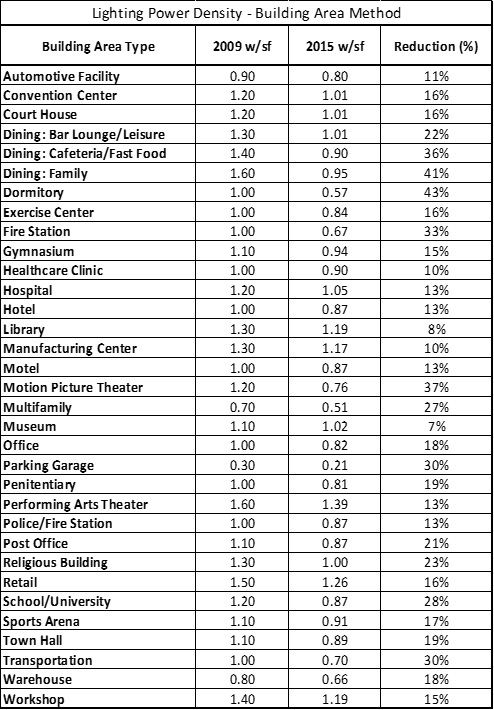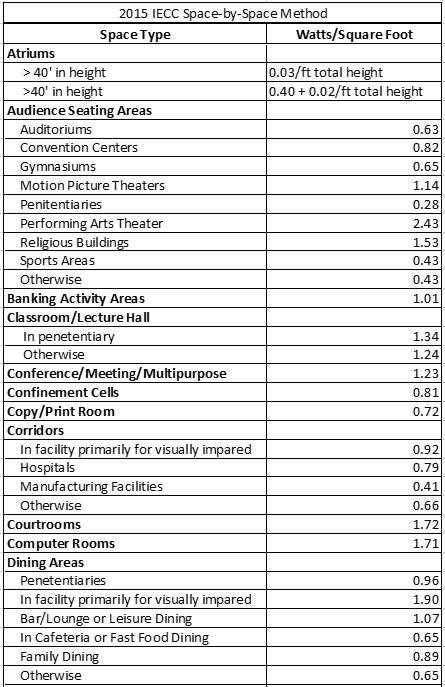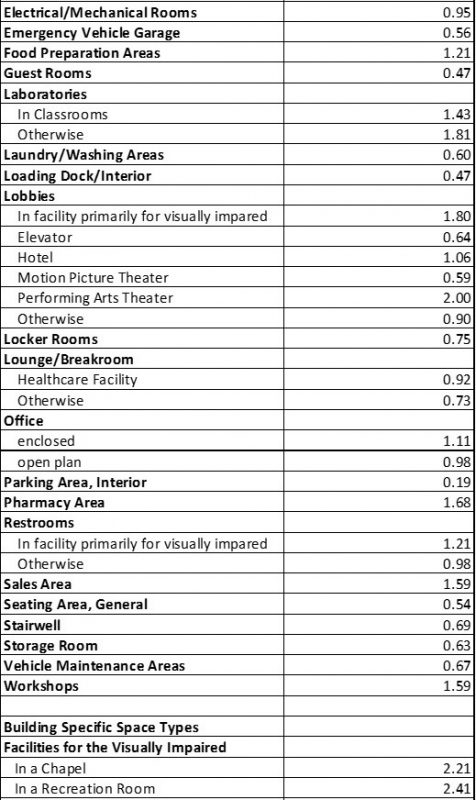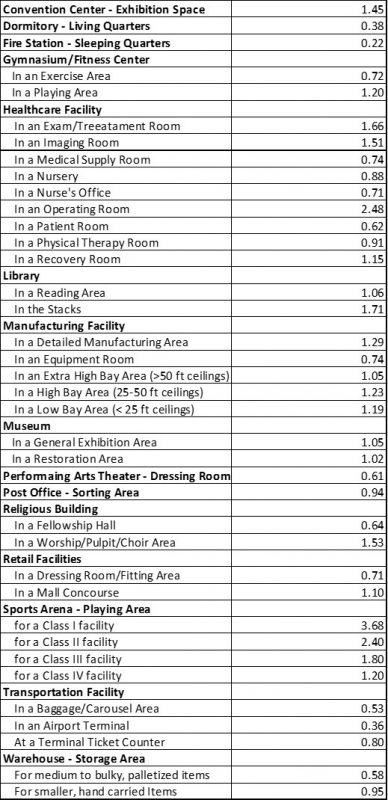Denver has announced that there will be an update in the building codes this year. Current lighting power density (LPD) requirements are defined in the 2009 International Energy Conservation Code (IECC). The update to the Denver codes includes the adoption of the 2015 IECC. This update makes a few changes to the allowable building lighting levels. The Building Area method in the 2015 IECC has significantly lower maximum LPD levels. In some areas, the maximum allowable wattage is over 40% less than in the current code. The 2015 code also introduces another method of determining compliance. Adopting the Space-by-Space method, common in other standards, allows for more flexibility in determining compliance.
Table 1 below shows the current and upcoming allowable lighting levels using the Building Area method.
Table 1 – 2015 IECC Building Area method
The introduction of the Space-by-Space method allows for a new path to compliance. You may find that using this method is more appropriate for your purposes. Tables 2 shows the allowable levels in the Space-by-Space method.
Table 2 – IECC 2015 Space-By-Space method
As you can see, the 2015 Denver code is significantly more strict with respect to allowable wattage levels. The inclusion of the Space-By-Space method may make compliance a bit easier in some cases, but either method will result in greater building efficiency overall.








